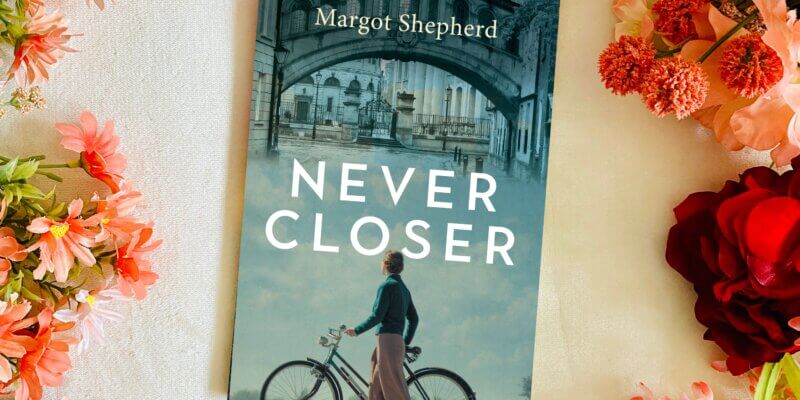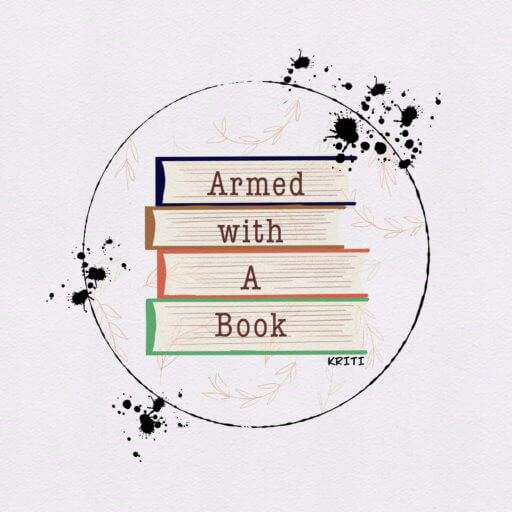Welcome, friend! Some weeks back, I shared about Never Closer, a dual timeline story that gives a glimpse into the little known history around penicillin. Today, I am excited to bring you this interview with Margot Shepherd! Let’s learn the inside story behind this beautiful book. 🙂

Never Closer
On an ordinary day in 2017, Jo receives a phone call about her 18-year-old daughter, Jessie. It is the call that every parent dreads. In 1940, 17-year-old Alice ties on her facemask and enters a laboratory to harvest a potential new miracle drug called penicillin. The lives of these women become entwined when Jo finds Alice’s diary in a vintage handbag. Past and present overlap and merge as life-changing events resonate for them all across the gulf of time.
This is a story about a diary opening a door on the past, chronicling a young woman’s determination to succeed against all odds, while unknowingly inspiring others to step into a better life. Set against the backdrop of the Second World War, the infancy of antibiotics and a modern medical emergency and its consequences, it not only reminds us how fortunate we are to live now, but also serves as a stark warning about the fragility of life and the dangers of complacency.
Content notes include grief, depression, gaslighting, emotional abuse, medical content.
Get to know the author: Margot Shepherd
Hi Margot! It is a pleasure to have you on Armed with A Book. Please tell me and my readers a bit about yourself.

I am British. I was born and spent my childhood in Yorkshire which is in the north of England. I now live in the south of England but still feel my roots are in the north. I am a scientist so when I started thinking about my first novel, I knew I wanted it to include some science and as a woman I wanted it told from a female point of view. There are so few books which do this. I still work part-time in medical research (more of this later) but I’m tapering this off as I want more time to write. I am addicted to reading and always knew I wanted to write a novel when I had the time. Six years ago I semi-retired, studied for an MA in Creative Writing and then started writing my novel. My leisure time is spent gardening, walking in the countryside where I live, accompanied by my Springer Spaniel, Genni, and of course reading! I also love travelling to new places mainly in other European countries.
Never Closer is a dual timeline story. In 2017, Jo reads Alice’s journal written in the 1940s. I love that you used diary entries in this book. What drew you to this format of storytelling?
Once I knew I was writing a dual timeline story, I had to have a way of connecting the two stories. I’d read other novels that had used a diary to do this very successfully so it seemed an obvious choice. I read a lot of books written in diary form, particularly those written during the 1940s to get a feel for how Alice would have written in that time period.
In your book, you shed light on the little known history around penicillin. How did you come across this side of history?
I read an article in a newspaper about The Penicillin Girls (the one Alice reads in the final chapter) and I immediately thought how interesting to tell the story of penicillin from the point of view of one of those girls. Alice is of course fictional but all the other characters in the Oxford laboratory are based on real people. I did a lot of research about how penicillin was developed and the more I read the more I realised how important this story was.
How was the first draft different from the final one?
It was very different. In the first draft all of Alice’s story was told as a diary. I decided that didn’t work and experimented with some of her story as a diary and some told in close 3rd person. The division between the two changed several times. Because Jo’s story and Alice’s story were woven together, if I changed Jo’s story which is where the diary appears I had to make sure I didn’t lose part of Alice’s story. The first chapter changed many times. I deleted a whole section of Jo’s story and a whole chapter of Alice’s story. There were many drafts!
Did you bring any of your experiences into this book?
I think all novelists use their own experiences. The relationship between Jo’s daughters, her experience as a mother, her longing to be back in Yorkshire are all based on my own experiences. Alice is very loosely based on my mother who was a very intelligent woman who was made to leave school at sixteen because her mother needed her to work. She like Alice eventually carved a career for herself through sheer determination. I was able to write about Alice’s laboratory work because of my own experience of working in a lab.
If you could meet any one of your characters in real life, who would you like to spend time with?
Norman Heatley is a real person, not a fictional character but I would have loved to have met him. Without him there would have been no penicillin. He was a true scientist, and he never gave up. Whenever there was a problem, he found a way to solve it. He was also an extremely kind and generous man.
What is something you would like the readers of this book to take away or ponder?
We are very lucky to have antibiotics thanks to the work of Florey, Chain and Heatley, yet we are squandering the gift they gave us by overusing them. People are already dying due to antibiotic resistance.
Do you have a favourite quote or scene in Never Closer that you find yourself going back to?
My favourite chapter is the last one. There are days when the writing flows more than others. When I wrote this the muse was truly with me and the final draft of this chapter was barely changed from the original.
Never Closer is your debut novel. Can you share any memorable moments or experiences from the publication journey?
Seeing my first print copy of the paperback.
Seeing it on the bookshelf of my local bookshop was something I had always dreamt about. That was an amazing moment.
But the icing on the cake is the feedback from readers who enjoyed it.
For readers who enjoyed your book, what should they pick up next?
If they are interested in women in medical science, I recommend The Woman with the Cure by Lynn Cullen (Goodreads) which is the amazing story of Dorothy Horstmann who was instrumental in the development of the polio vaccine.
Tell me about your medical research at the University of Surrey.
I mainly work on clinical trials of new drugs or lifestyle interventions for people with diabetes using a very specialised technique to understand how the drugs/interventions affect how the body handles glucose. I love my job and have been very privileged to have had a very rewarding career.
How do you balance writing with everyday obligations? I would love to know about your routine.
I need a good block of time when I’m writing. I try to clear my diary for at least a week at a time so I can really submerge myself in the story. I do write on occasional days when I’m not busy but it’s never as satisfying. Rainy days are the best writing days because if the weather is fine, I want to be in the garden or walking. But when I’m not physically writing I’m still thinking about my characters and what might happen next and I’m observing nature which can all be used when I do write. Walking is particularly good for thinking about writing.
Do you have ideas on what you want to write about in your next novel?
My next novel is very different. I’m halfway through the first draft although the whole story arc is in my head. It is about an unlikely friendship between two women who are both hiding secrets, one of whom is an entomologist so I’m learning a lot about insects.
Is there anything else you would like to add?
Thank you for inviting me for this interview and I hope everyone who reads Never Closer gets as much pleasure from reading it as I did from writing it.
Thank you so much for taking the time to chat with me and share with my readers.
Thanks for joining us! Connect with Margot on her website, Goodreads, Instagram, BlueSky and X.
I hope you will check out Never Closer on Goodreads. Read my review here.

What a fascinating interview, thanks for bringing this book to my attention! The subject matter is interesting and the idea of antibiotic resistance is terrifying.